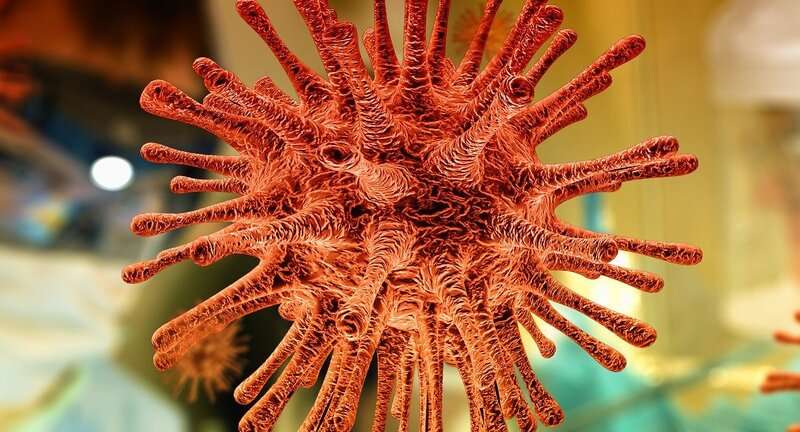By Dan De Luce and Leila Gharagozlou

WASHINGTON — A senior member of Iran’s medical association says the country’s death toll from the coronavirus is three to four times the official number released by the government, the latest warning from Iranian doctors who are urging political leaders to take more aggressive action to contain the pandemic.
Hossein Gheshlaghi, a senior member of Iran‘s Supreme Medical Council, a non-governmental professional association that licenses doctors, made the extraordinary assertion as the Iranian government faced another spike in infections.
Gheshlaghi’s comments follow a series of statements and letters from the professional association since March urging the government to follow scientific advice and to provide more resources for medical staff on the frontlines of the crisis.
In a letter released Tuesday addressed to President Hassan Rouhani, the association struck a grave tone, citing “unacceptable mortality rates.” The group called for urgent, coordinated action across the government, saying that “without national unity and decisive action, we cannot control the spread.”
To contain the virus, the government, along with the military and law enforcement authorities, needs to carry out binding measures and to expand testing and contact tracing, according to the letter.
At the moment, patients are arriving at the hospital already in critical condition due to a lack of early diagnosis, the association said in the letter. The association wrote that 40 to 50 percent of those who die in the hospital from COVID-19 could have been diagnosed earlier.
The letter also called for the government to provide for the safety of exhausted medical staff and to pay “their delayed wages.”
Since the pandemic struck in February, Iran’s secretive regime has faced persistent questions about whether it is disclosing the full scale of the crisis. The comments from Gheshlaghi, as well as from a high-ranking health ministry official, were highly unusual and served to reinforce a sense that the government was struggling to get the virus under control.
The state-run Mehr news agency quoted Gheshlaghi as saying that field statistics, data from medical staff, what he called “buried numbers” and positive Covid-19 tests showed that the number of fatalities was much higher than the government had acknowledged.
Part of the reason for the discrepancy was that medical teams were recording new deaths from the virus but the ministry of health was not adding the names of the latest victims to the official toll, according to Gheshlaghi.
Earlier this month, Iraj Harirchi, the deputy minister of health, said the number of fatalities from the coronavirus was up to 2.2 times higher than official data. Harirchi had come under criticism in February when he sought to play down the impact of the virus even as he wiped his brow repeatedly at a press conference. The next day, he tested positive for the coronavirus.
Harirchi’s comments appeared to be an attempt by the ministry to be more open about the fallout from the virus and to possibly shift responsibility to other parts of the government amid growing popular frustration, political analysts said.

Iran’s health ministry said on Sunday that 434 people had died from the coronavirus over the past 24 hours, bringing the death toll to more than 35,000. The ministry said it recorded 7,719 new confirmed infections since Saturday. Iran has reported more than 620,000 confirmed virus cases in all.
If Gheshlaghi’s assertions are accurate, that would put the death toll from the virus at roughly 101,000 to 135,000.
The Iranian government has yet to respond to the allegations that it has underestimated or downplayed the true toll. Iran’s mission to the United Nations did not respond to a request for comment.
Hadi Ghaemi, executive director of the Center for Human Rights in Iran, said the comments from senior officials alleging a higher death toll “confirm that the government from the first day has been presenting a very deceptive picture about the reality in Iran.”
Iran has suffered the worst coronavirus outbreak in the Middle East, with hospitals stretched to capacity and medical staff exhausted. Health authorities say some hospitals have run out of beds for new patients.
Three doctors at two hospitals in Tehran recently told a NBC News reporter in New York that there was confusion and skepticism surrounding the government’s numbers on the virus. They also said there was a problem with the reliability of some testing kits.
According to state television this week, Iranian authorities were recording a death from the virus every four minutes.
The virus has hit the senior ranks of Iran’s political leadership, with members of parliament and more than a dozen current and former officials contracting the disease. An adviser to the country’s supreme leader, Ayatollah Ali Khamenei, was among those infected.
The speaker of Iran’s parliament, Mohammad Bagher Ghalibaf, tweeted Wednesday that he has tested positive for coronavirus.
Along with the pandemic, Iranians are struggling to make ends meet amid a reeling economy and mounting U.S. sanctions. The country’s currency, the rial, has plummeted in value against the U.S. dollar over the past year.
The government’s handling of the coronavirus has been marked by contradictory actions and messages. At first, officials sought to play down the virus as authorities declined to close crowded religious shrines. But as infections swelled in March, the government ordered offices and nonessential businesses to shut down. The restrictions were soon lifted, only to be reinstated again as infections rose.
The government’s handling of the coronavirus has been marked by contradictory actions and messages. At first, officials sought to play down the virus as authorities declined to close crowded religious shrines. But as infections swelled in March, the government ordered offices and nonessential businesses to shut down. The restrictions were soon lifted, only to be reinstated again as infections rose.
CNBC
Leave a Reply
You must be logged in to post a comment.